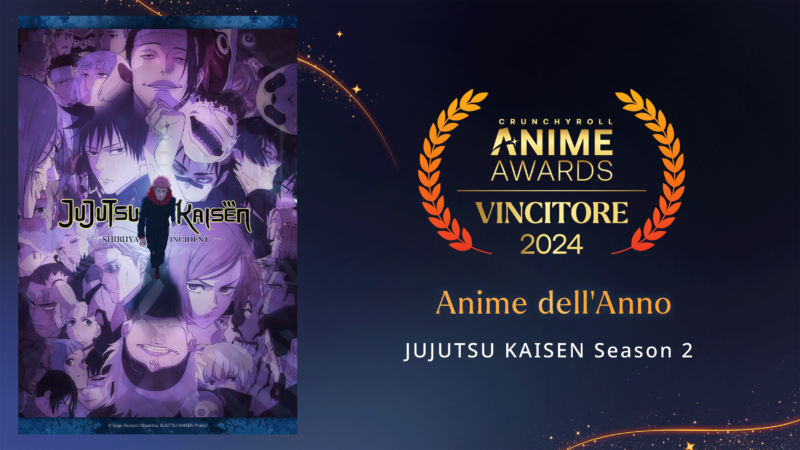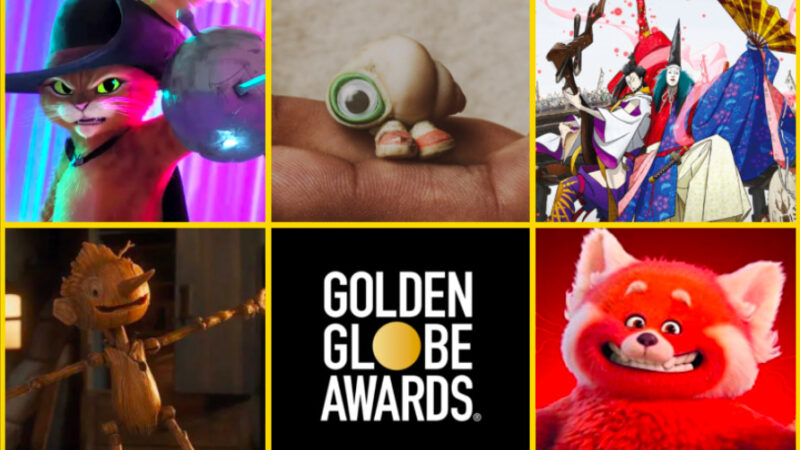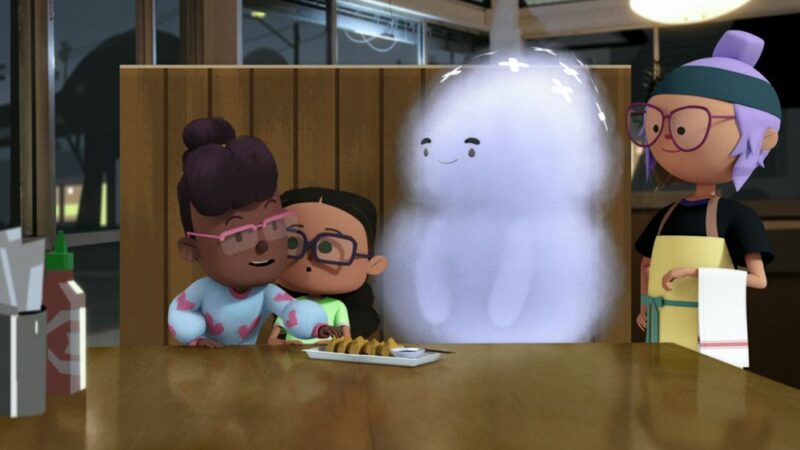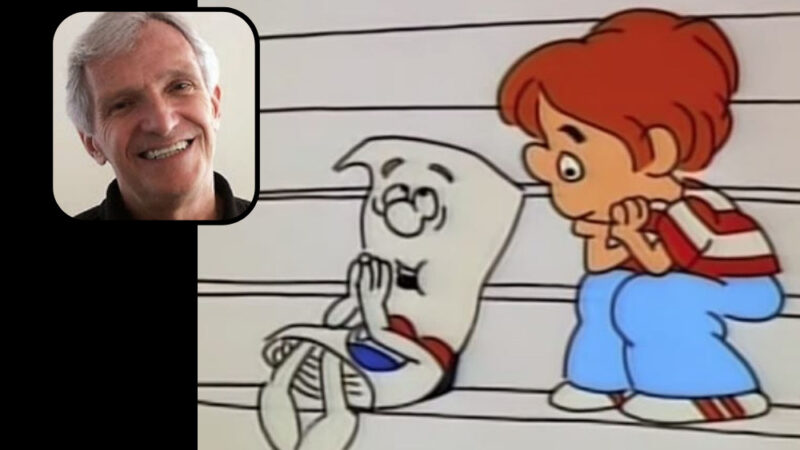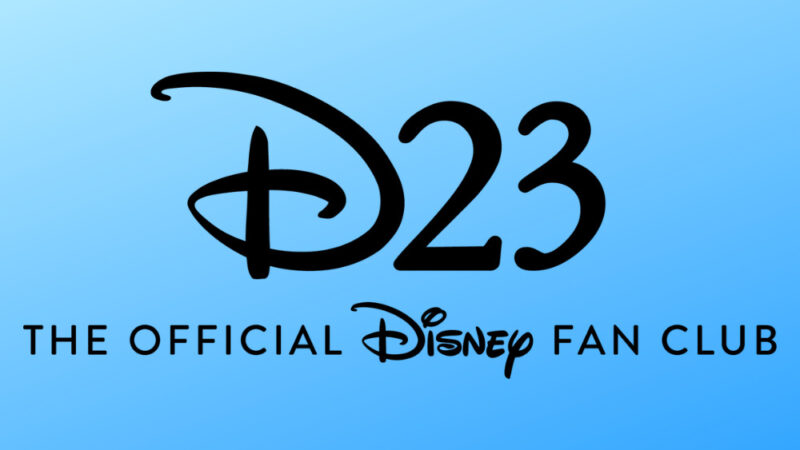The magic in short form of Annecy: a preview of the splendid 2021 edition
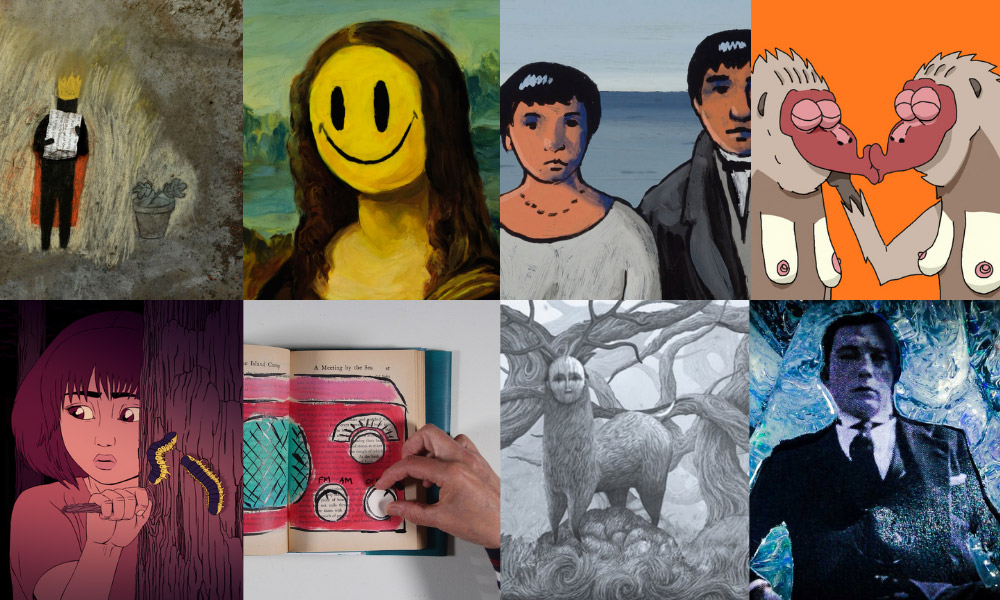
*** This article originally appeared in the June-July '21 issue of Animation magazine (No. 311) ***
This year's edition of the Annecy Festival (14-19 June) offers a rich collection of very original and inspiring short films from all over the world. Here is a sampler:
No leader please
Directed by Joan Gratz
Celebrated Portland-based animation author Joan Gratz is best known for memorable shorts such as Oscar winner Mona Lisa going down a ladder You are (1992), nominated in Annecy kubla khan (2010) and candy jam (1988). Of course, it also worked on features like Il profeta, Return to Oz e The Adventures of Mark Twain. This year the brilliant artist returns to the festival circuit with clay animation No leader please, a tribute to the works of Basquiat, Banksy, Keith Haring and Ai Weiwei.
“I was inspired by Charles Bukowski's poetry,” she tells us via email. "Although he was a cynic and 'The Laureate of American Lowlife', this poem celebrates individualism, change and creativity."
Gratz began animating his short film on May 26, 2020 and finished the images on July 29, 2020. "The film evolved from an interest in graffiti artists and their motivations," he notes. “My animation tools consist of my finger, an easel and oil-based clay. Shot digitally and then edited in After Effects. I was in charge of design, animation, editing and production, and Judith Gruber-Stitzer was in charge of the music and effects. "
He says one of the benefits of being a producer, director and animator is that he can choose not to have a budget! "I know independent shorts aren't going to be profitable, so why consider a budget?" Gratz asks. “I was delighted to make a short film based on such a powerful short poem read with such eloquence. The hardest part of the film was finding the right music that didn't compete with the words and images. I think No leader please it's such a positive film. And the Just do it of animated short films! "
The illustrious director, who turned 80 last April, says she is a huge fan of the works of fellow independent artist Theodore Ushev (Vaysha blind, The physics of pain). Gratz says he also admires the animated films from Aardman Animations and Cartoon Saloon. "As an independent short film director in Portland, during an epidemic, I don't have an overview," he adds. “All I know is that Netflix is producing two feature films in Portland, which brings together animators, directors, producers and artisans from around the world. If it weren't for COVID, I could enjoy their company! "
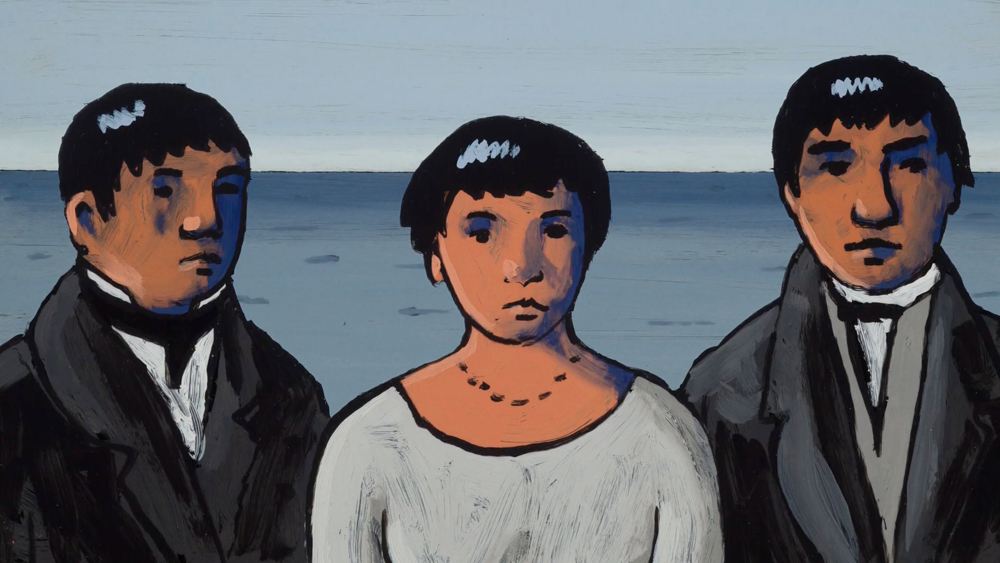


Darwin's notebook
Darwin's notebook
Directed by Georges Schwizgebel
It's always a cause for celebration when we have a new animated short by Georges Schwizgebel. The Swiss animation master, best known for famous works such as Thu, Romanza e The man without a shadow, is back with a splendid work titled Darwin's notebook, which traces the atrocities committed by settlers to the people of Tierra del Fuego, the southernmost province of Argentina.
Schwizgebel was inspired to base his short on these incidents after visiting an exhibit about Charles Darwin at the Notre Dame University campus museum near Chicago. "There were several documents about this misadventure that happened to three natives of Tierra del Fuego that Darwin tells in his diary," he says. “But it was only a few years later that I started this project and read other books on this topic that helped me better understand what had happened at Alacaluf. The initial scenario has changed a lot and has reached post-production, and the COVID pandemic has also delayed the finish line. In fact it took me three years spread over five years to complete the short ".
Made for around $ 250.000, the short film's length has expanded from its originally planned seven minutes to nine minutes. “I'm still working the old way, so my tools are brushes, acrylics and celes. I'm using an animation desk with a digital camera and the Dragonframe program instead of a 35mm camera, which is now stored in a locker, ”the director tells us.
He says the hardest part of realizing his vision was the beginning. “The big challenges are front-line rehearsals, coming up with ideas to tell this story without using dialogue and how to switch between shots in an elegant way. Then the more the work goes on, the more ideas lead to others. I am very satisfied with the music that Judith Gruber-Stitzer composed for the film. "
Like many animators around the world, Schwizgebel had to contend with restrictions at work during the pandemic. “It all happened when the images for the short film were finished, but the recording studios were closed. So, in the meantime, I started another movie at home without having to go to my studio ”.
The director who has been nominated four times for his work in Annecy leaves us with some advice for aspiring short film directors. “First, be passionate about moving images. The tools have evolved a lot and allow you to make very bad but also beautiful films. This is what I didn't realize when digital animation was first introduced. At the time I thought it was only useful for video games and for the army! "
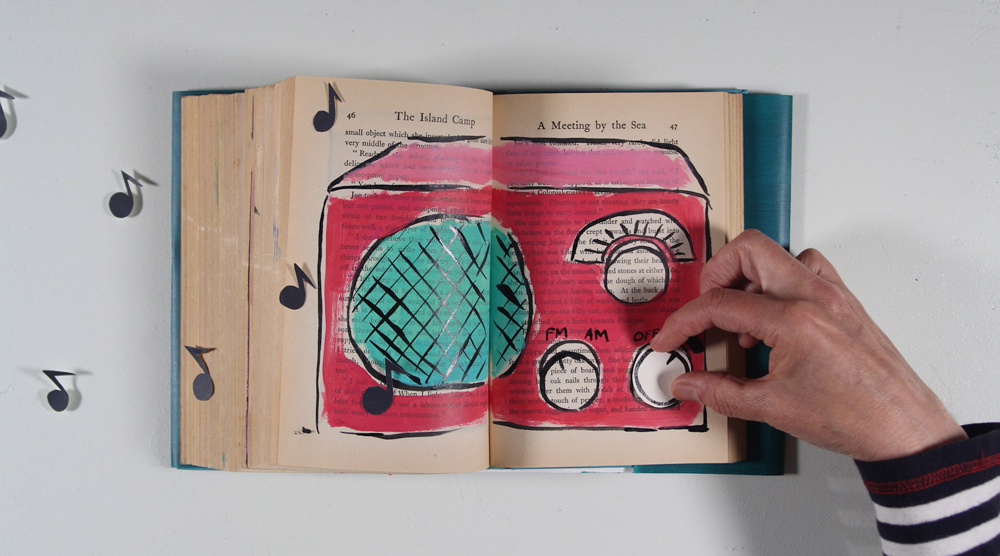


Like being at home
Like being at home
Directed by Andrea Dorfman
A short film about the social isolation of the global pandemic era is perhaps the perfect work of art for 2021. Andrea Dorfman collaborated closely with National Film Board of Canada producer Annette Clarke, poet-musician Tanya Davis and sound designer Sacha Ratcliffe to create the wonderful short film Like being at home. As Dorfman tells us via email, "At the start of the pandemic, my friend and sometimes collaborator, the brilliant poet Tanya Davis, sent me her new poem about life in isolation, which is a tender, aching, recognizable piece. , the kind of poem that had to come out, and I knew animation would give it wings to fly. "
Made with a budget of approximately 70.000 Canadian dollars ($ 57.000 US), the short film uses pages of books to illustrate the many moods and ideas of Davis' timely poem. “I wanted to work with acrylics, but supply and shipping was cut short by the pandemic and I couldn't get the paper for animation, but I had a lot of books,” Dorfman recalls. “I love animated projects that use books (especially The game of opposites by Lisa LaBracio) and I was curious. Also, the motif of a book - of reading, an activity we might turn to while isolated at home - lent itself well to the theme of poetry. The books themselves were another story. I wanted old books with yellowed pages. I found several books in my boyfriend's mother's basement and the rest came from a friend who works in a second-hand bookstore. I used about 15 books in total. "
Production of the short film began in early June 2020 and was completed in mid-August. Dorfman combined painting in books with stop-motion paper cut animation. He shot books with a Canon 7D Nikon fixed-lens camera at 12 frames per second, using popular Dragonframe stop-motion software. The hardest part, according to the director, was coping with the unusually hot summer weather in Nova Scotia last year. "I loved making this movie, but I was animating in a tiny room with the window closed!" she remembers.
Citing the works of Amanda Forbis and Wendy Tilby, Lizzy Hobbs, Daisy Jacobs, Daniel Bruson, Alê Abreu and Signe Bauman as some of her favorites, Dorfman says she is always drawn to hand-made animation, where audiences can see and hear. the presence of the animators. He also says he loved the overwhelmingly positive response to his short film. "The pandemic has been so tough for so many and Tanya's poetry resonates deeply," he notes. "The music, composed by Daniel Ledwell, is emotional and enveloping, and Sacha Ratcliffe's sound design draws the viewer to create a moving and engaging experience."
In farewell, he also leaves us some excellent advice. "If you have an idea for a short animation, start it!" she says. “Don't be overwhelmed by how many options there are for materials, style or approach to use. Once you start, even if you don't know exactly where you are going, you will understand! "



In nature
In nature
by Marcel Barelli
Swiss artist Marcel Barelli has always been fascinated by nature. But for his latest animated adventure, he decided to make a film about homosexuality for a large audience. "I have read many articles that have pointed out that homosexuality is very common among animals," he says. “I thought it was an interesting idea and a little known topic. In fact, there are very few books and documentaries on the subject, perhaps three or four books in English and one in French ”.
The next step was to contact the French authority on the matter, the ethologist and journalist Fleur Daugey. "She agreed to help me write the short film, as a French expert on the subject," she notes. “The writing was very fast. I decided to turn the film into a children's film, using simple language. It took me a year to make the five-minute short. I usually draw on paper, but for the first time, to work faster, I decided to animate the film with Toon Boom Harmony. I used my daughter as a narrator for the French version! In all it cost about 100.000 euros [about $ 121,2000]. "
The director says his biggest challenge was keeping it short and simple, despite the complexity of the subject. "Talking about homosexuality without talking about sexuality and sex was a bit of a challenge," he notes. "I am very happy with the result, because I feel we can tell everyone that homosexuality is present all over the world, and it is something that is naturally present in nature."
Barelli says his favorite animated film of all time is the Oscar-winning Frédéric Backdé The man who planted trees. "I love movies that make us think about the impact our way of life has," he says. “And I try to do the same with my shorts. I hope our short will make you smile, because it is also a funny film (I hope) but it also makes you think a bit! "
 Mom
Mom
Mom
Directed by Kajika Aki
When Kajika Aki was 16, she fought against anorexia because, as she tells us, her body no longer understood how to live. "Then, at 18, I realized very early on that drawing for me was about survival and introspection, I worked very hard for a long time," he recalls. "If I didn't do the work, at the end of the day I couldn't eat or sleep."
The idea for his new animated short film Mom she came to her one night when she started thinking about pictures of running horses and dogs, so she drew them. After leaving his studies at Gobelins University in France in 2017, the artist made the short film using TVPaint and After Effects, skipping the storyboarding process entirely. “I would draw shot after shot based on what freely came to mind,” recalls Aki. “I need the freedom to create and I can't work for an audience. I work with "flashes" of evidence and intuition; there is no limit to my honesty while I create because I am not in control: it is a pure and selfish act ".
Aki says she threw herself into the project and worked tirelessly on it. "Back then it took a long time to find musicians and financial means," he says. “My composers (Théophile Loaec and Arthur Dairaine) did an impressive job, I feel so lucky to have met them at the right time. I know how important audio is in a film. "
She finds it amusing that only at the end of the trial did she realize that her short was about love. “It is about the first form of love that I received on Earth, so I called it Mom "explains Aki." The title always comes to the end, because I don't know what I'm talking about until it's over. Freedom and honesty are essential parts of my definition of love; and it starts with being true to myself. "
Looking back, she says the biggest challenge for her was respecting her body during the production of the short film. “I can work like a computer and forget to eat or move. After two months of working on Mom , I got out of bed and fell to the floor because my legs were no longer moving. I was alone in my apartment and for five minutes I thought I had lost my legs. Then, I had to train for 30 minutes every day… I'm not a good example of someone leading a healthy life! Working alone and creating is like breathing or living, and everything seems logical when I'm alone: I struggle more when I'm on vacation! "
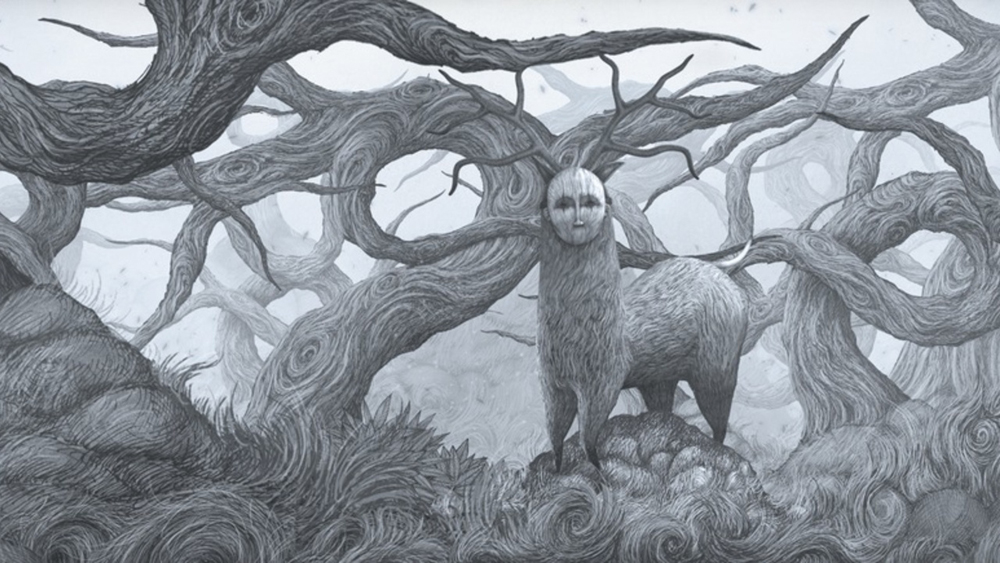


Under the skin, the bark
Under the skin, the bark
Directed by Franck Dion
French artist Franck Dion has been sketching in Annecy in the past years with his short films Edmond was a donkey (2012) and The head vanishes (2016). This year he is back with a new project that he says he made as a response to his previous work. "I think it was a failure since I spent a year and a half working towards a result that was not at all what I wanted to do," he recalls. “It was extremely frustrating and sad. I blamed myself a lot, and this had the effect of hastening the process of a depression that had been looming over me for a long time. '
The inspiration came a couple of years ago when Dion worked on a video mapping project with Gael Loison and discovered the music of the Dale Cooper Quartet & The Dictaphones. “I immediately recognized in their music a very stimulating emotion,” says the director. "At the same time, while I was writing my first feature film, I came up with the idea of a short film that featured a character not loved by its author."
The 2020 pandemic prompted Dion to focus on his short film and to collaborate with Loison and his band. But his trial was different from his previous initiatives. "For this project, I turned the whole process upside down," he notes. “I started building the demiurge puppet without really knowing what its story would be. I changed his appearance dozens of times to finally realize that it was not his story I wanted to tell but rather the story of his creation, the character of the hunter who draws. "
Dion used scanned ink drawings and worked in both 3D modeling and digital 2D to assemble the design. He adds: “Of course, there is the talent of the Dale Cooper Quartet who composed the music for the film, as well as Chloé Delaume and Didier Brunner, whose voices we hear on the answering machine. Then there is the unwavering support of my wife, which is particularly precious to me ».
The director says he enjoyed improvising and exploring the pleasures of craftsmanship. “I loved going from traditional drawing to sculpture, from animation to compositing, with always the same joy. I find these different techniques so fascinating and complementary. I, who have known animation in Super 8, often tell myself that it is a great opportunity to be able to take advantage of today's digital tools with such ease ".
Of course, every creative journey has its rewards. For Dion, the short allowed him to play with a radically different way of working. “I learned to let go of the usual contingencies: I think I had to let off steam a little! It was a very strong and happy experience that allowed me to continue working on my feature film with much more serenity! "
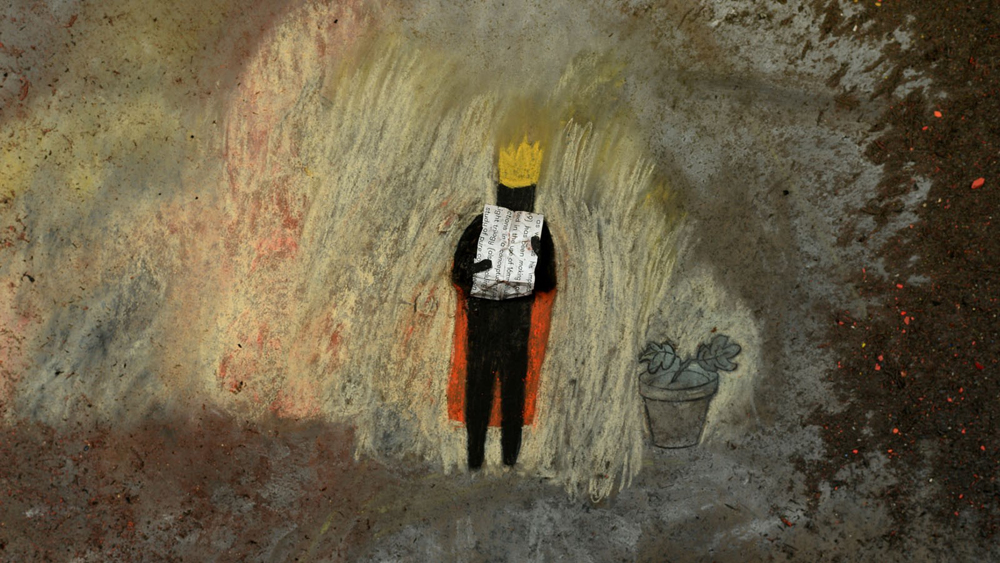


Conversations with a whale
Conversations with a whale
Directed by Anna Bergmann
Horrifying rejection letters from film festivals can also serve as unlikely sources of inspiration. Just ask Anna "Samo" Bergmann, who has created a special folder to save all the rejection emails she has received from animation festivals around the world. “I was spoiled by the success of the previous festival from my student days, and I expected things to be the same for my new film. Shocked by my failure, I was trying to understand the reasons for the extent of my depression and to find new motivations to continue working as an artist and director. "
His new short Conversations with a whale allowed her to reinvent her creative process. "I tried to keep creation more intuitive, allowing things to grow in motion," he explains. “I had no storyboard or animatic, just a rough idea, a feeling. The ideas for the film were born on the animation table, during the making of the animation. It was scary and annoying for me not to know exactly how the film was going to develop, but it also brought more excitement to every stage of making the film. "
According to the director, Conversations with a whale was created directly under the camera lens. “I was drawing with charcoal pencils and dry pastel on kraft paper, using cut and pixelated animations, in addition to the objects I built,” he notes. “I was mainly working on one layer, but sometimes I had a second layer of glass to add depth to the frame. I also made good use of Duplo blocks and white sticky putty to secure and hold objects in my animation. As for the software and equipment, I was using Dragonframe in conjunction with a Nikon D800 camera and editing in Adobe After Effects and Premiere. "
Bergmann, who chooses my neighbor Totoro, Spirited Away, The house of the wolf, When the day comes e Storytelling like some of her favorites in the realm of animation, she says she feels blessed to be able to solve the puzzle of her animated project. "I wasn't sure until the end that I would be able to find all the missing pieces," she notes. “I feel lucky it all worked out! This film is my love letter to artists, art, its audience and especially animation. I hope that the people who watch this film feel this love and feel the taste of the magic that happens every time my characters start living their own life. "
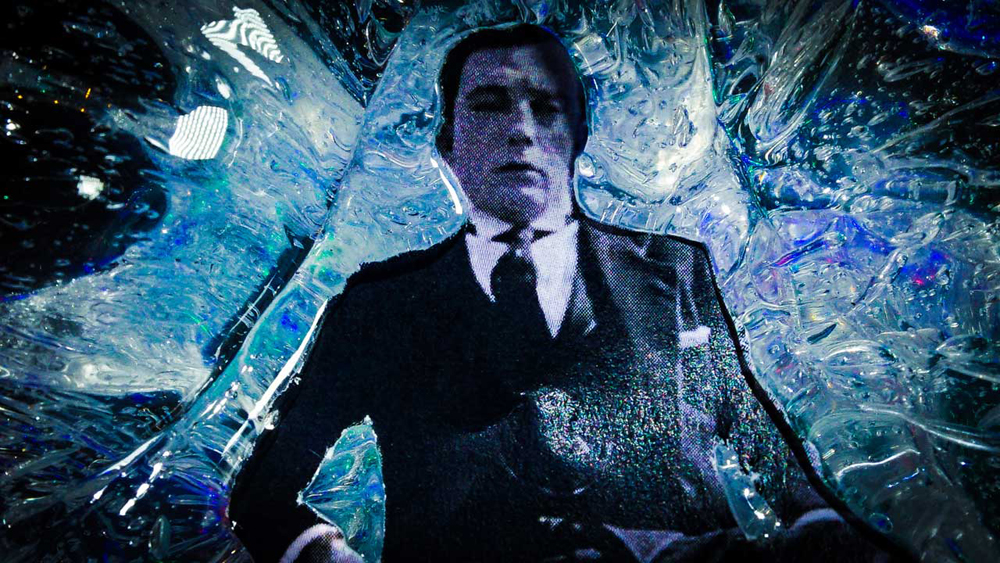


June night
June night
Directed by Mike Maryniuk
The many faces of silent film legend Buster Keaton and the natural world are very present in the latest short film by artist Mike Maryniuk. The director says he wants to explore the pandemic dream in the project. “The logic of the dream is something that I really like as a spectator and a dreamer; it provides artistic leeway and allows a cinematic universe to blossom, ”he explains. I had also grown seedlings for the garden and imagined they longed to get out. I wanted to examine our relationship with nature, which can only be repaired by recalibrating, recognizing the futility of certain occupations and simultaneously dipping one toe of each toe into the pools of the past and the future, while staring at the intricate noodle that is the present! "
The National Film Board of Canada project, produced with a budget of CAD 68.000 (approximately US $ 55.400), was completed last summer over a four-month period. “I used a lot of X-Acto knives, a lot of printer ink, card stock, miniatures, UV lamps, time-lapse growing plants - all captured using Dragonframe and some Sony cameras,” recalls Maryniuk. “My producer, Jon Montes (NFB), helped elaborate some of the ideas and archival images they came from. The production department was a one-person army. We had a great sound and music team (Andy Rudolph, Kelsey Braun, Sarah Jo Kirsch and Aaron Funk). Many NFB people have worked behind the scenes with their magic. "
The director says he is quite satisfied with the level of artistic freedom that has been granted to him for his passion project. “Experience creative synchronistic interventions from the world around you, too weird and exciting not to include them in the creative process,” he says. "I guess the process of making this film was actually the most enjoyable part, and paying homage to Buster Keaton, the original indie director, was quite special." And the hardest part of the job? He replies: "I have to say he was probably cutting 16.000 Buster Keaton singles off the card!"
When asked about some of his favorite animated works, he mentioned that of Caroline Leaf Two sisters, by Virgil Widrich Fast movie, Ed Ackerman and Greg Zbitnew's 5 cents per copy, as well as anything from David Daniels, Leslie Supnet, Helen Hill, and Winston Hacking. He is also wonderfully open when it comes to advice on the art form. "Animation can be a lot of things," he points out. “The latest technologies are great, yet working with your hands, old-fashioned technologies and an artisan mindset can become the antidote to sitting in front of a screen. This allows editing, coloring and compositing to become the antidote to tedious handwork. Ultimately, finding some kind of balance is important when working. You don't have to be good, you just have to work hard and be yourself. "
For more information on this year's Annecy selection, visit www.annecy.org.
Go to the source of the article on www.animationmagazine.net

